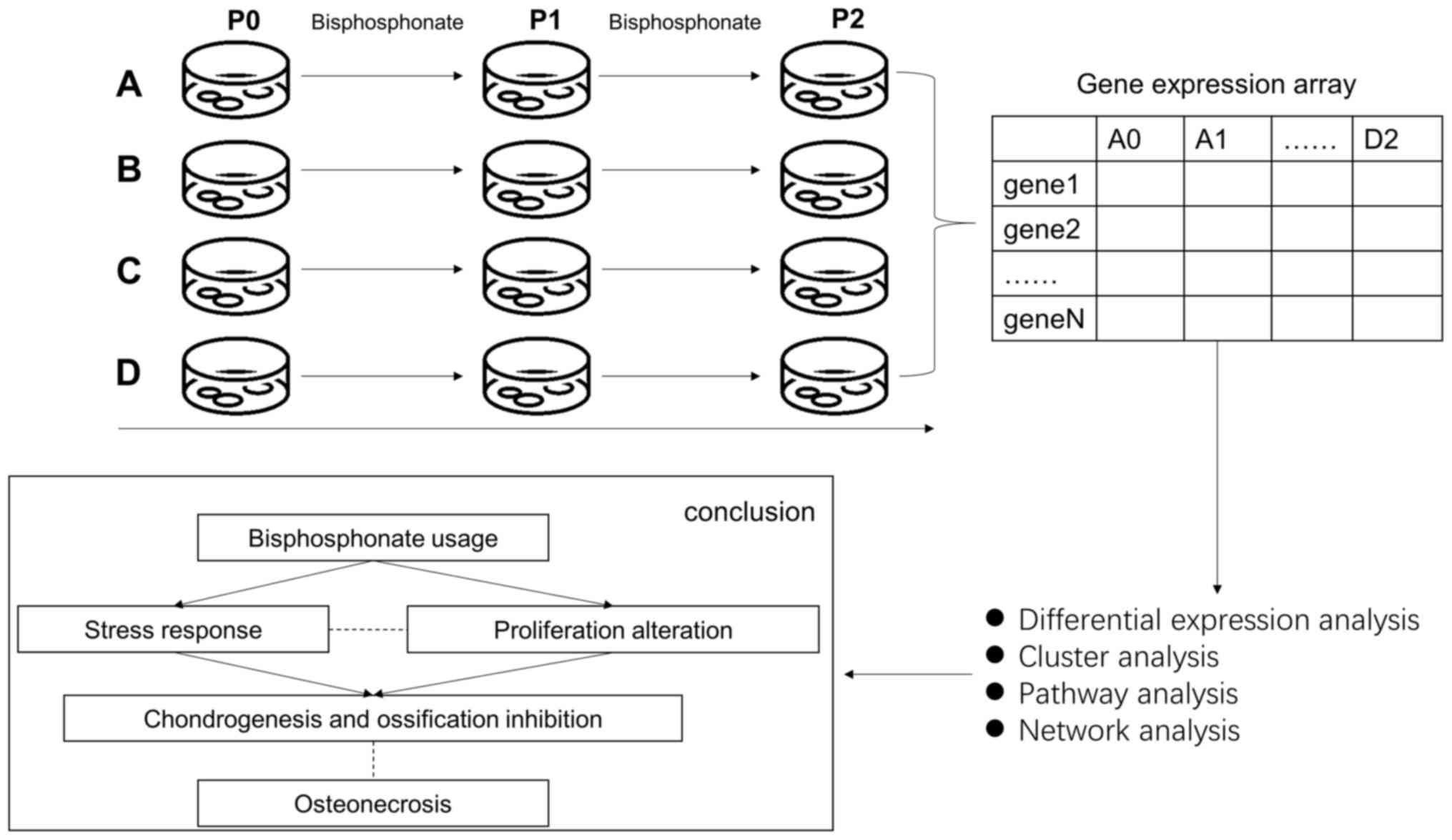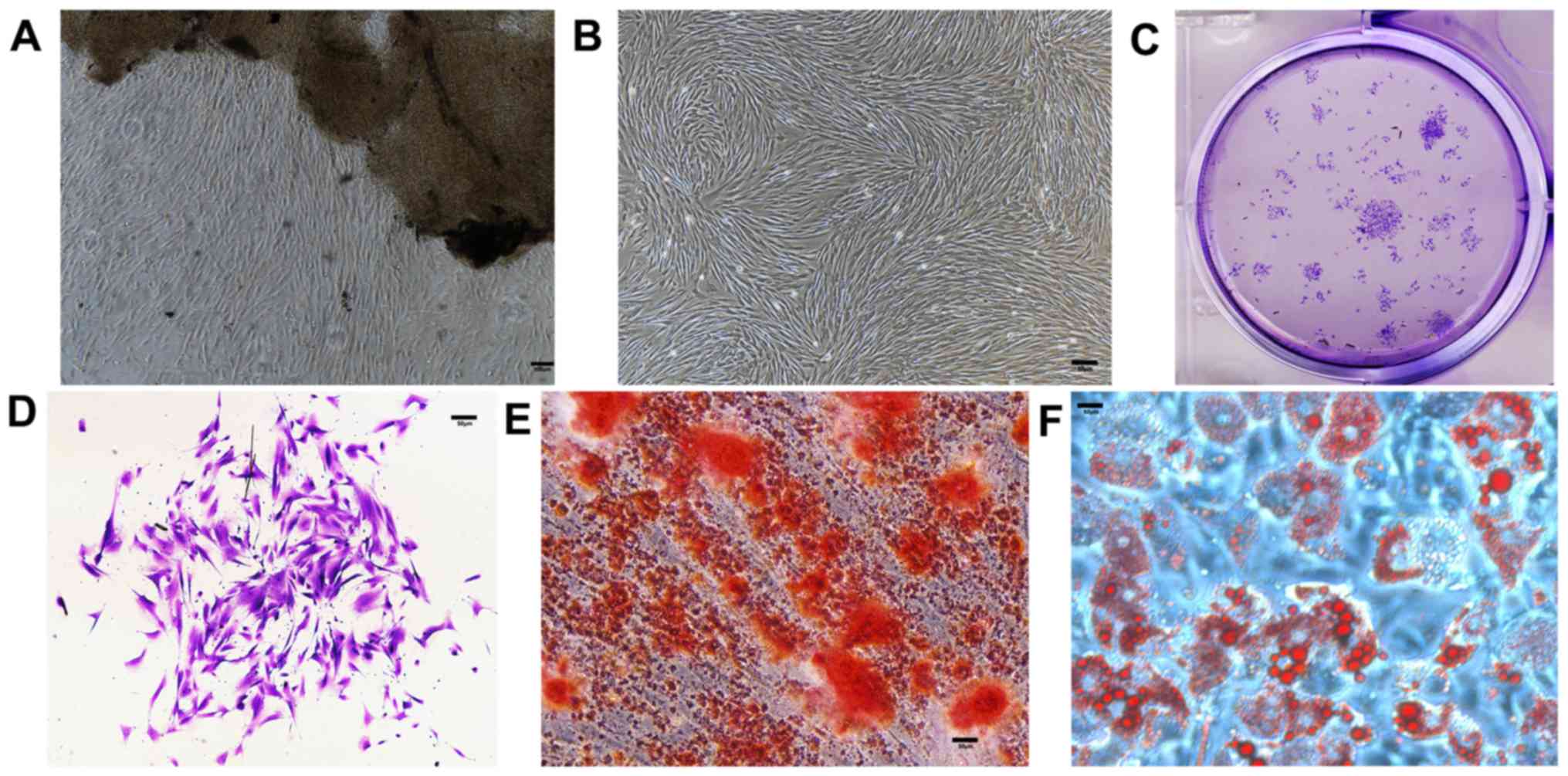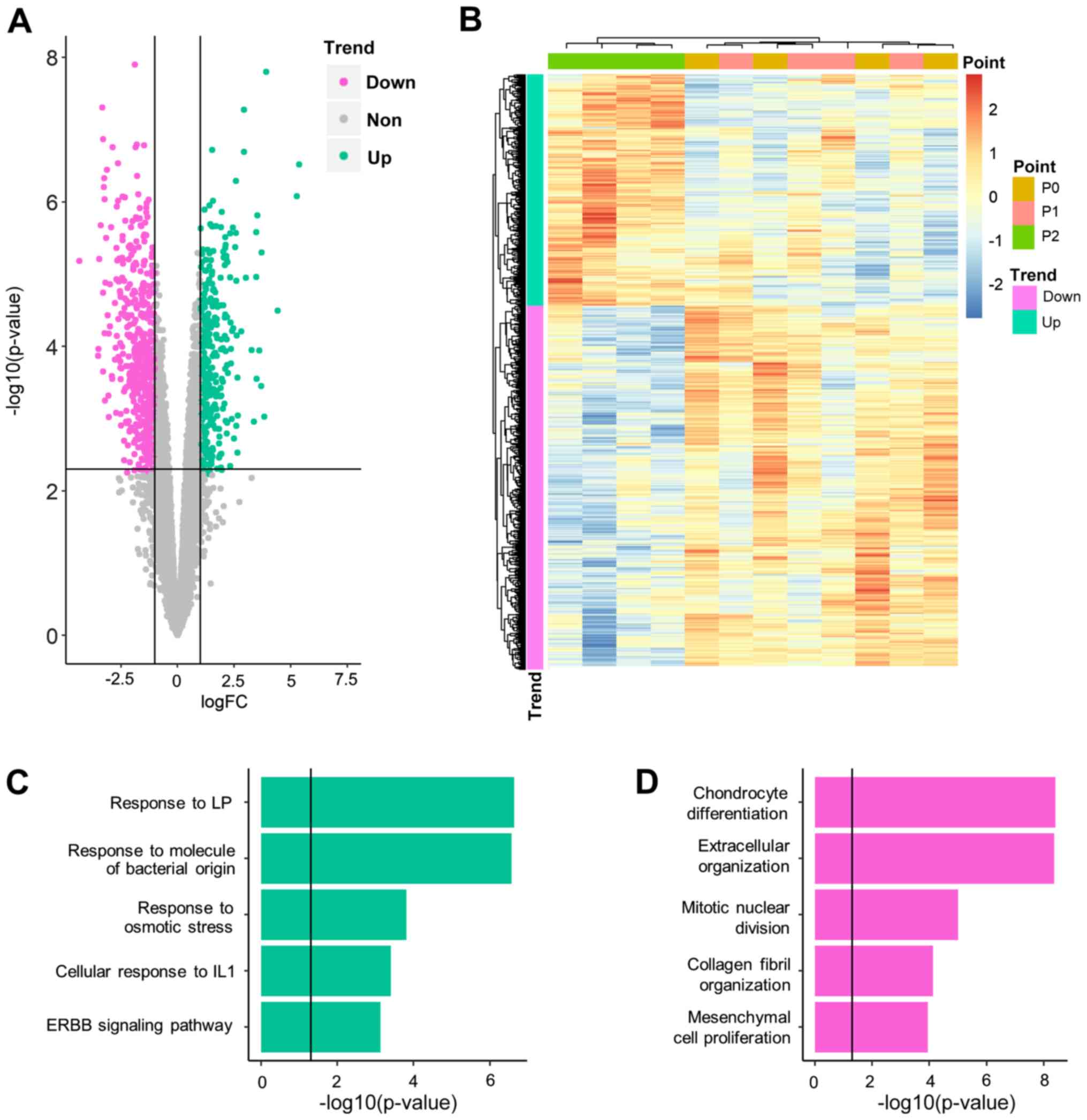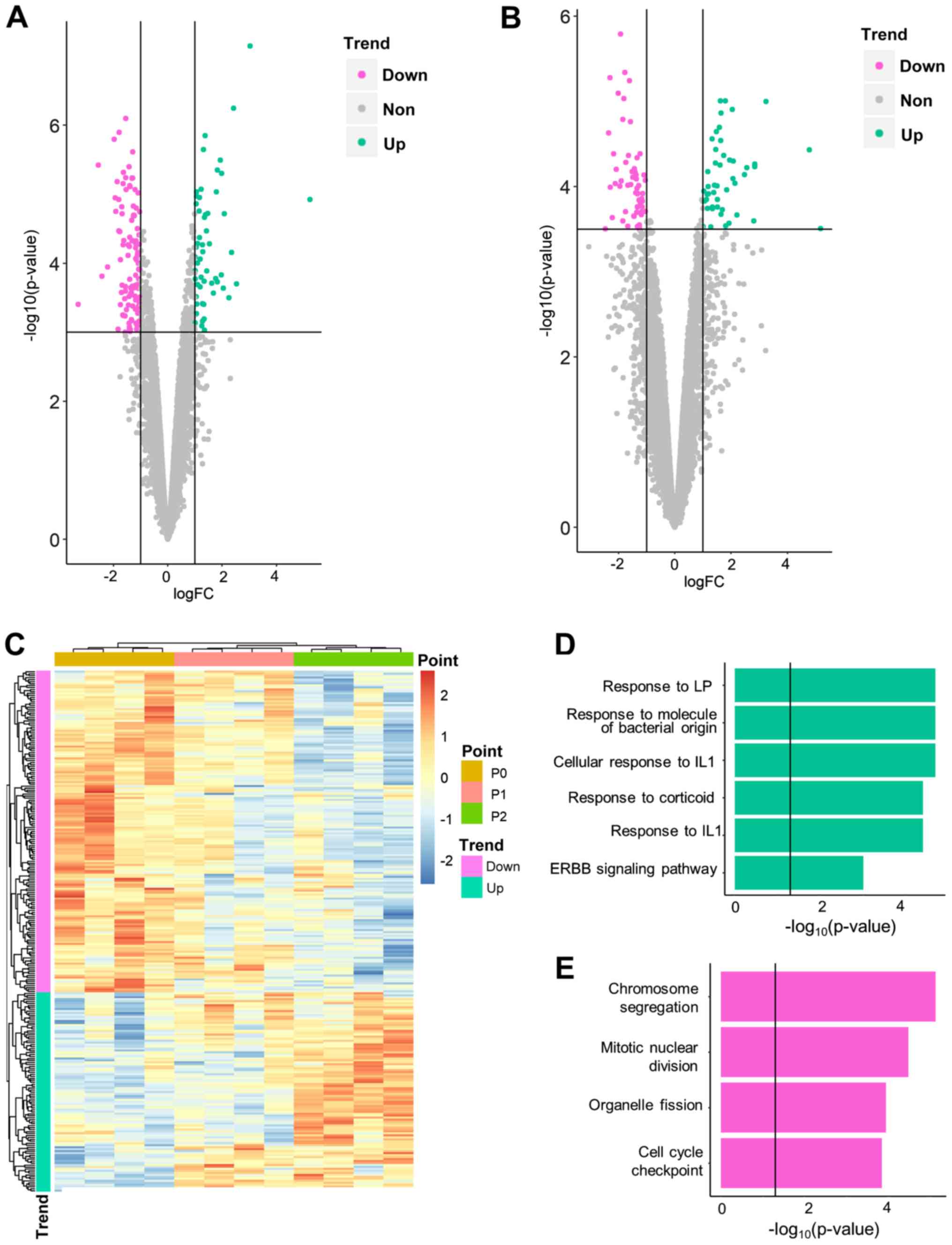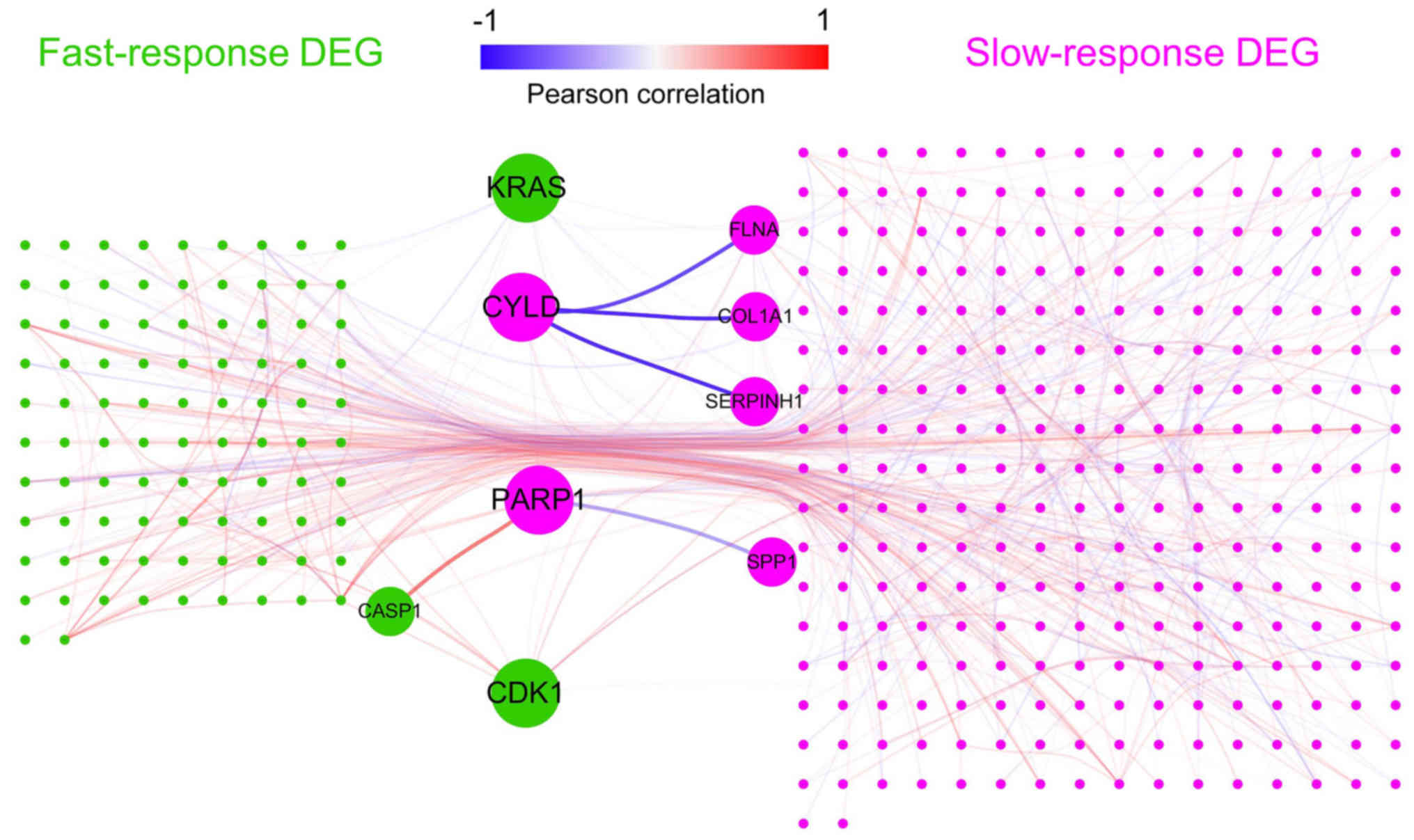|
1
|
Woo SB, Hellstein JW and Kalmar JR:
Systematic review: Bisphosphonates and osteonecrosis of the jaws.
Ann Intern Med. 144:7532006. View Article : Google Scholar : PubMed/NCBI
|
|
2
|
Holen I and Coleman RE: Bisphosphonates as
treatment of bone metastases. Curr Pharm Des. 16:1262–1271. 2010.
View Article : Google Scholar : PubMed/NCBI
|
|
3
|
Lo JC, O'Ryan FS, Gordon NP, Yang J, Hui
RL, Martin D, Hutchinson M, Lathon PV, Sanchez G, Silver P, et al:
Prevalence of osteonecrosis of the jaw in patients with oral
bisphosphonate exposure. J Oral Maxillofac Surg. 68:243–253. 2010.
View Article : Google Scholar : PubMed/NCBI
|
|
4
|
Elsayed R, Abraham P, Awad ME, Kurago Z,
Baladhandayutham B, Whitford GM, Pashley DH, McKenna CE and
Elsalanty ME: Removal of matrix-bound zoledronate prevents
post-extraction osteonecrosis of the jaw by rescuing osteoclast
function. Bone. 110:141–149. 2018. View Article : Google Scholar : PubMed/NCBI
|
|
5
|
Schwartz HC: American association of oral
and maxillofacial surgeons position paper on medication-related
osteonecrosis of the jaw-2014 update and CTX. J Oral Maxillofac
Surg. 73:3772015. View Article : Google Scholar : PubMed/NCBI
|
|
6
|
Marx RE: Oral and intravenous
bisphosphonate-induced osteonecrosis of the jaws: History etiology,
prevention, and treatment. Royal College of Surgeons of England.
2009.
|
|
7
|
Aghaloo TL, Kang B, Sung EC, Shoff M,
Ronconi M, Gotcher JE, Bezouglaia O, Dry SM and Tetradis S:
Periodontal disease and bisphosphonates induce osteonecrosis of the
jaws in the rat. J Bone Miner Res. 26:1871–1882. 2011. View Article : Google Scholar : PubMed/NCBI
|
|
8
|
Oteri G, Bramanti E, Nigrone V and Cicciù
M: Periodontal health in osteoporotic patients affected by BRONJ:
An observational study. J Osteoporos. 2013:2312892013. View Article : Google Scholar : PubMed/NCBI
|
|
9
|
Li CL, Lu WW, Seneviratne CJ, Leung WK,
Zwahlen RA and Zheng LW: Role of periodontal disease in
bisphosphonate-related osteonecrosis of the jaws in ovariectomized
rats. Clin Oral Implants Res. 27:1–6. 2016. View Article : Google Scholar : PubMed/NCBI
|
|
10
|
Thumbigere-Math V, Michalowicz BS, Hodges
JS, Tsai ML, Swenson KK, Rockwell L and Gopalakrishnan R:
Periodontal disease as a risk factor for bisphosphonate-related
osteonecrosis of the jaw. J Periodontol. 85:226–233. 2014.
View Article : Google Scholar : PubMed/NCBI
|
|
11
|
Krimmel M, Ripperger J, Hairass M, Hoefert
S, Kluba S and Reinert S: Does dental and oral health influence the
development and course of bisphosphonate-related osteonecrosis of
the jaws (BRONJ)? Oral Maxillofac Surg. 18:213–218. 2014.
View Article : Google Scholar : PubMed/NCBI
|
|
12
|
Li M, Yu Y, Shi Y, Yuqiong Zhou Y, Zhang
W, Hua H, Ge J, Zhang Z, Ye D, Yang C and Wang S: Decreased
osteogenic ability of periodontal ligament stem cells leading to
impaired periodontal tissue repair in BRONJ patients. Stem Cells
Dev. 29:156–168. 2020. View Article : Google Scholar : PubMed/NCBI
|
|
13
|
Russell RGG, Watts NB, Ebetino FH and
Rogers MJ: Mechanisms of action of bisphosphonates: Similarities
and differences and their potential influence on clinical efficacy.
Osteoporos Int. 19:733–759. 2008. View Article : Google Scholar : PubMed/NCBI
|
|
14
|
Otto S, Pautke C, Opelz C, Westphal I,
Drosse I, Schwager J, Bauss F, Ehrenfeld M and Schieker M:
Osteonecrosis of the jaw: Effect of bisphosphonate type, local
concentration, and acidic milieu on the pathomechanism. J Oral
Maxillofac Surg. 68:2837–2845. 2010. View Article : Google Scholar : PubMed/NCBI
|
|
15
|
Ritchie ME, Phipson B, Wu D, Hu Y, Law CW,
Shi W and Smyth GK: limma powers differential expression analyses
for RNA-sequencing and microarray studies. Nucleic Acids Res.
43:e472015. View Article : Google Scholar : PubMed/NCBI
|
|
16
|
R Core Team: R: A language and environment
for statistical computing. R Foundation for Statistical Computing.
(Vienna, Austria). 2019.
|
|
17
|
Raivo Kolde: Pheatmap: Pretty Heatmaps. R
package version 1.0.8. 2018.
|
|
18
|
Ashburner M, Ball CA, Blake JA, Botstein
D, Butler H, Cherry JM, Davis AP, Dolinski K, Dwight SS, Eppig JT,
et al: Gene ontology: Tool for the unification of biology. Nat
Genet. 25:25–29. 2000. View
Article : Google Scholar : PubMed/NCBI
|
|
19
|
Yu G, Wang LG, Han Y and He QY:
clusterProfiler: An R package for comparing biological themes among
gene clusters. OMICS. 16:284–287. 2012. View Article : Google Scholar : PubMed/NCBI
|
|
20
|
Chatr-aryamontri A, Oughtred R, Boucher L,
Rust J, Chang C, Kolas NK, O'Donnell L, Oster S, Theesfeld C,
Sellam A, et al: The BioGRID interaction database: 2017 update.
Nucleic Acids Res. 45:D369–D379. 2017. View Article : Google Scholar : PubMed/NCBI
|
|
21
|
Shannon P, Markiel A, Ozier O, Baliga NS,
Wang JT, Ramage D, Amin N, Schwikowski B and Ideker T: Cytoscape: A
software environment for integrated models of biomolecular
interaction networks. Genome Res. 13:2498–2504. 2003. View Article : Google Scholar : PubMed/NCBI
|
|
22
|
Katz J, Gong Y, Salmasinia D, Hou W,
Burkley B, Ferreira P, Casanova O, Langaee TY and Moreb JS: Genetic
polymorphisms and other risk factors associated with bisphosphonate
induced osteonecrosis of the jaw. Int J Oral Maxillofac Surg.
40:605–611. 2011. View Article : Google Scholar : PubMed/NCBI
|
|
23
|
Franchi L, Eigenbrod T, Muñoz-Planillo R
and Nuñez G: The inflammasome: A caspase-1-activation platform that
regulates immune responses and disease pathogenesis. Nat Immunol.
10:241–247. 2009. View Article : Google Scholar : PubMed/NCBI
|
|
24
|
Chellaiah MA, Kizer N, Biswas R, Alvarez
U, Strauss-Schoenberger J, Rifas L, Rittling SR, Denhardt DT and
Hruska KA: Osteopontin deficiency produces osteoclast dysfunction
due to reduced CD44 surface expression. Mol Biol Cell. 14:173–189.
2003. View Article : Google Scholar : PubMed/NCBI
|
|
25
|
Falet H, Pollitt AY, Begonja AJ, Weber SE,
Duerschmied D, Wagner DD, Watson SP and Hartwig JH: A novel
interaction between FlnA and Syk regulates platelet ITAM-mediated
receptor signaling and function. J Exp Med. 207:1967–1979. 2010.
View Article : Google Scholar : PubMed/NCBI
|
|
26
|
Khosla S, Burr D, Cauley J, Dempster DW,
Ebeling PR, Felsenberg D, Gagel RF, Gilsanz V, Guise T, Koka S, et
al: Bisphosphonate-associated osteonecrosis of the jaw: Report of a
task force of the American Society for bone and mineral research. J
Bone Miner Res. 22:1479–1491. 2007. View Article : Google Scholar : PubMed/NCBI
|
|
27
|
Aghaloo T, Hazboun R and Tetradis S:
Pathophysiology of osteonecrosis of the jaws. Oral Maxillofac Surg
Clin North Am. 27:489–496. 2015. View Article : Google Scholar : PubMed/NCBI
|
|
28
|
Lorenzo-Pouso AI, Pérez-Sayáns M,
González-Palanca S, Chamorro-Petronacci C, Bagán J and
García-García A: Biomarkers to predict the onset of
biphosphonate-related osteonecrosis of the jaw: A systematic
review. Med Oral Patol Oral Cir Bucal. 24:e26–e36. 2019.PubMed/NCBI
|
|
29
|
Coleman RE, Major P, Lipton A, Brown JE,
Lee KA, Smith M, Saad F, Zheng M, Hei YJ, Seaman J and Cook R:
Predictive value of bone resorption and formation markers in cancer
patients with bone metastases receiving the bisphosphonate
zoledronic acid. J Clin Oncol. 23:4925–4935. 2005. View Article : Google Scholar : PubMed/NCBI
|
|
30
|
Ruggiero SL, Dodson TB, Fantasia J,
Goodday R, Aghaloo T, Mehrotra B and O'Ryan F; American Association
of Oral and Maxillofacial Surgeons, : American association of oral
and maxillofacial surgeons position paper on medication-related
osteonecrosis of the jaw-2014 update. J Oral Maxillofac Surg.
72:1938–1956. 2014. View Article : Google Scholar : PubMed/NCBI
|
|
31
|
Allen MR and Burr DB: The pathogenesis of
bisphosphonate-related osteonecrosis of the jaw: So many
hypotheses, so few data. J Oral Maxillofac Surg. 67 (Suppl
5):S61–S70. 2009. View Article : Google Scholar
|
|
32
|
Reid IR and Cornish J: Epidemiology and
pathogenesis of osteonecrosis of the jaw. Nat Rev Rheumatol.
8:90–96. 2012. View Article : Google Scholar
|
|
33
|
Zhu X, Ma X and Hu Y: PARP1: A promising
target for the development of PARP1-based candidates for anticancer
intervention. Curr Med Chem. 23:1756–1774. 2016. View Article : Google Scholar : PubMed/NCBI
|
|
34
|
Mathis BJ, Lai Y, Qu C, Janicki JS and Cui
T: CYLD-mediated signaling and diseases. Curr Drug Targets.
16:284–294. 2015. View Article : Google Scholar : PubMed/NCBI
|
|
35
|
Wang H, Lai Y, Mathis BJ, Wang W, Li S, Qu
C, Li B, Shao L, Song H, Janicki JS, et al: Deubiquitinating enzyme
CYLD mediates pressure overload-induced cardiac maladaptive
remodeling and dysfunction via downregulating Nrf2. J Mol Cell
Cardiol. 84:143–153. 2015. View Article : Google Scholar : PubMed/NCBI
|
|
36
|
Vriend J and Reiter RJ: Melatonin, bone
regulation and the ubiquitin-proteasome connection: A review. Life
Sci. 145:152–160. 2016. View Article : Google Scholar : PubMed/NCBI
|
|
37
|
Rodriguez-Pascual F and Slatter DA:
Collagen cross-linking: Insights on the evolution of metazoan
extracellular matrix. Sci Rep. 6:373742016. View Article : Google Scholar : PubMed/NCBI
|
|
38
|
Saito M and Marumo K: Effects of collagen
crosslinking on bone material properties in health and disease.
Calcif Tissue Int. 97:242–261. 2015. View Article : Google Scholar : PubMed/NCBI
|















